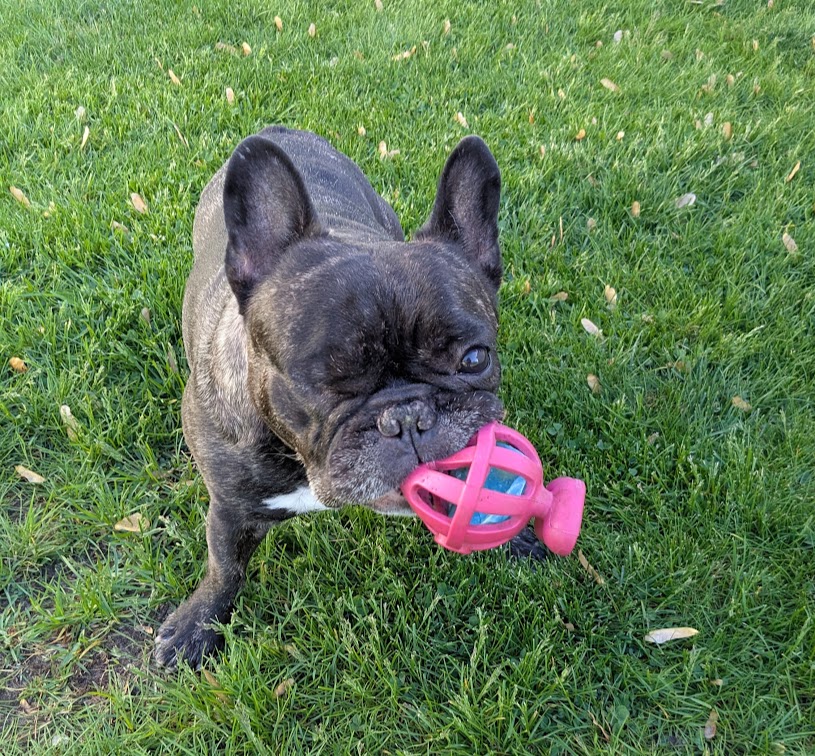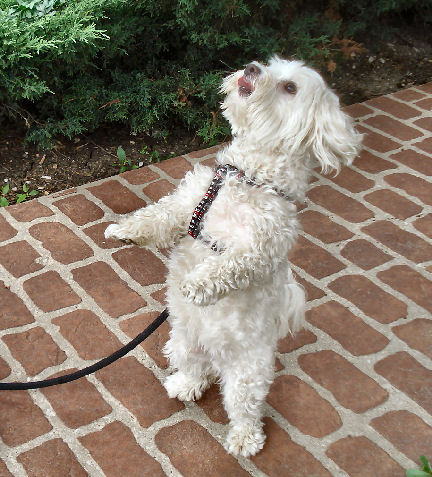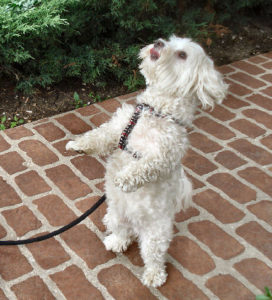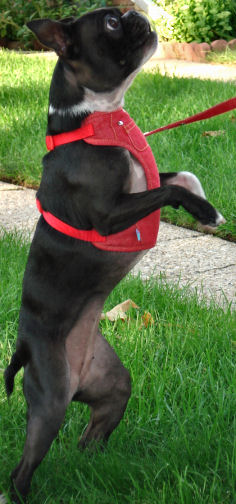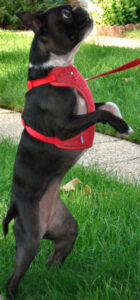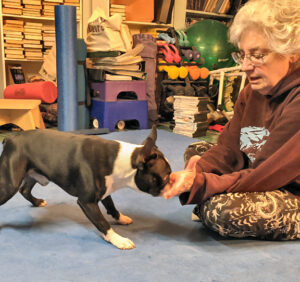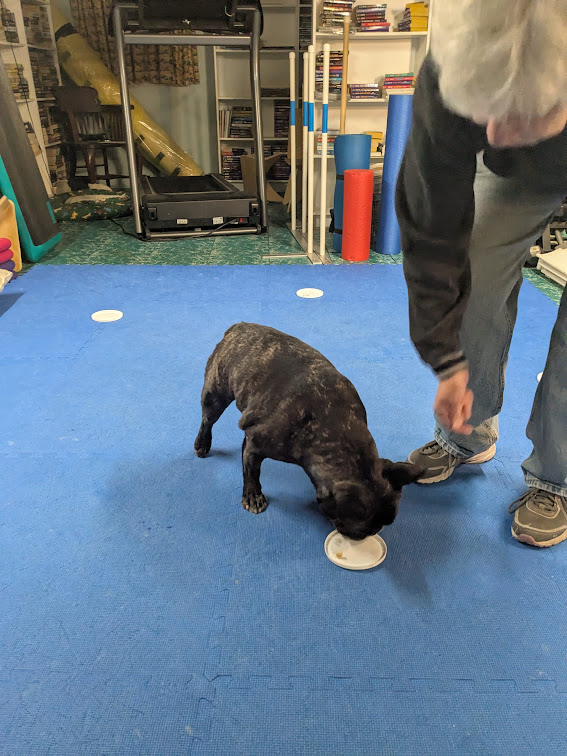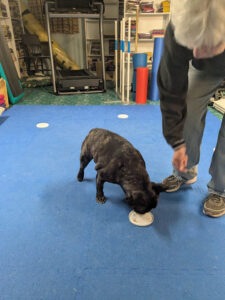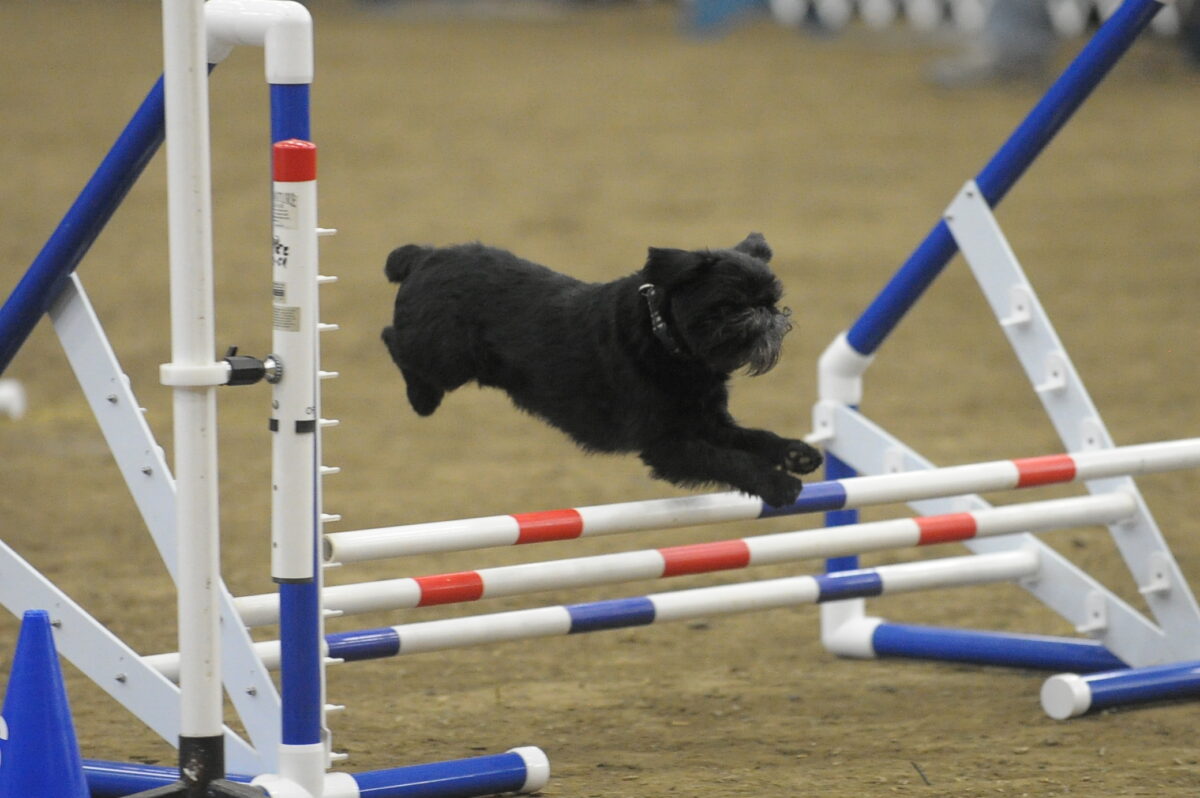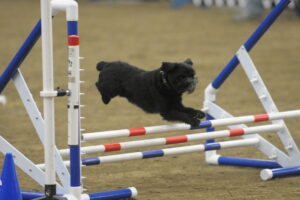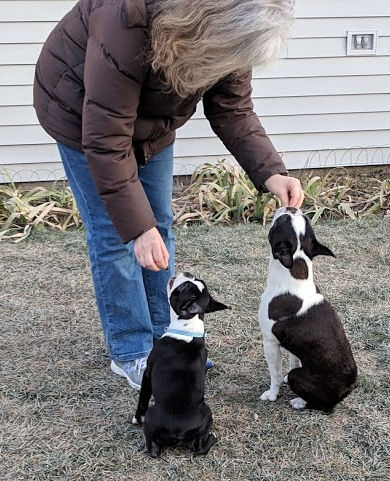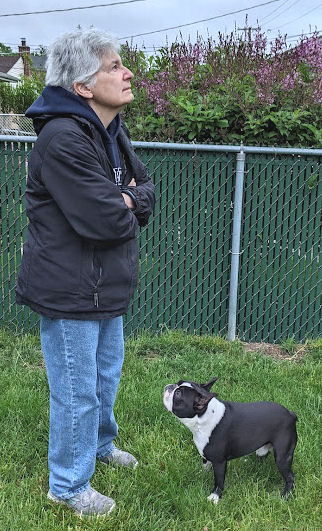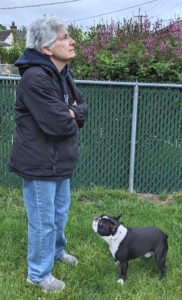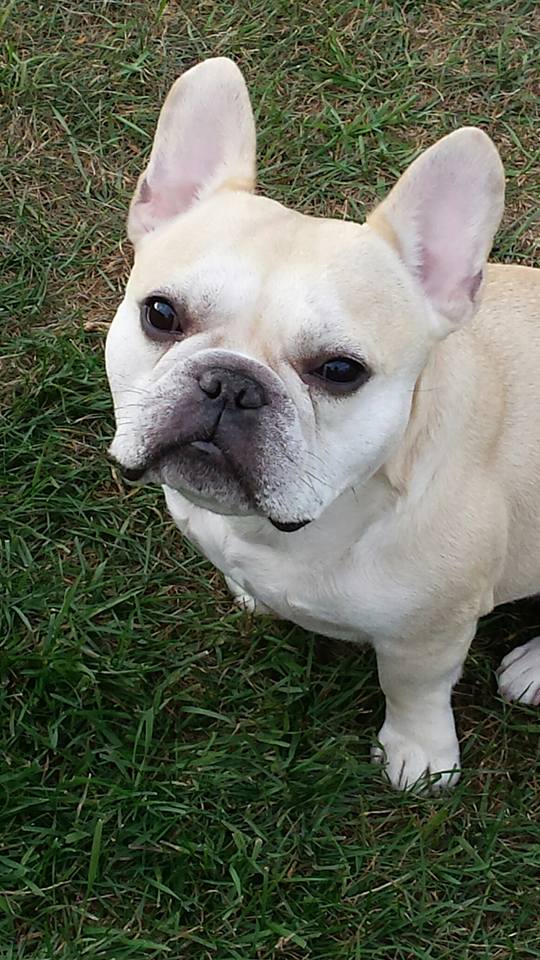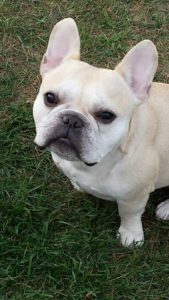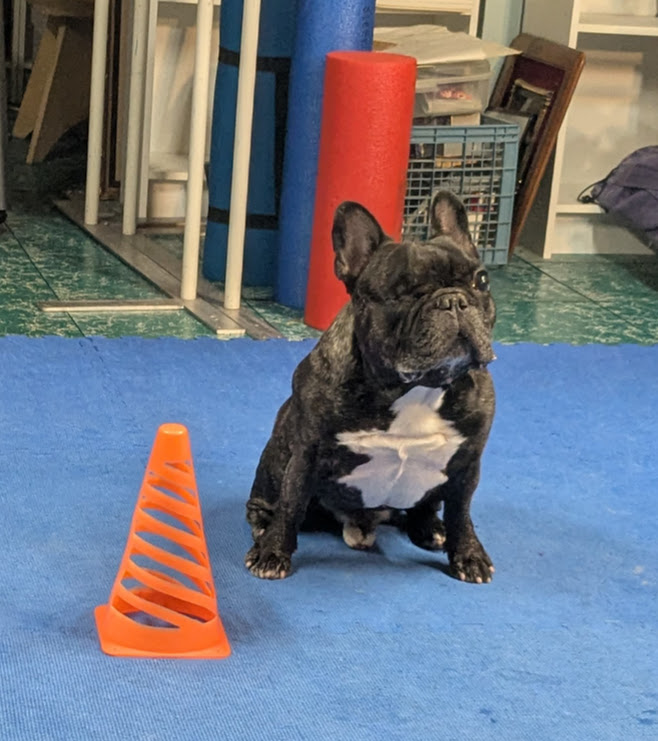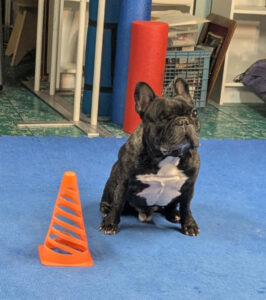Teaching your dog to “Hold it!” is more useful than you’d think.
It’s adorable. We know someone whose dog holds a white board, so she can write any message or greeting and have a ready-made perfect social media post.
It’s helpful and adorable. Someone else we know taught her competition obedience dog to hold and carry his gear bag. The best part was the dog wasn’t a Golden Retriever or a Border Collie. He was a toy dog – a little Brussels Griffon.
It’s game-changing, helpful, and adorable. Teaching your dog to hold something in high-traffic areas can keep them busy and out of trouble. Even if you have an exuberant, excitable dog.
Why it’s magical
Hope’s French Bulldog Torque makes lots of funny sounds. Most Frenchies do. Other dogs have, on occasion, reacted poorly to him. It got to the point where he was always on the lookout for other dogs, ready to bark and behave rather rudely.
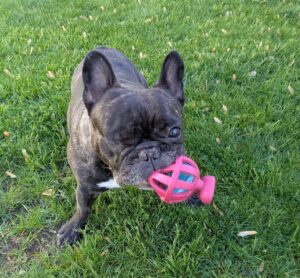
Torque also loves toys. Rubber balls with holes in them are his favorite. So Hope taught him to “hold” his toy. Now he confidently walks around anywhere, from the local neighborhood to a dog sport competition, showing everyone his little pink ball. Everyone thinks it’s adorable, not camouflage for potential misbehavior.
If your dog is somewhat leash-reactive, or reacts to other dogs, people, bicycles, strollers, etc. on walks, you can solve your problem by teaching your dog to “Hold!” a favorite toy. Instead of leaving the impression that your dog’s a jerk, you’ll inspire positive reactions and smiles. Make sure the toy’s a cute one, and as charming as possible. Like Torque and his little pink ball.
Teaching “Hold it!”
Most dogs want to hang onto their favorite stuff. If that’s the case for your dog, your training challenge will be sustaining the “Hold!” then getting your dog to “Drop it!” on command. Of course, ultimately your dog will have to “Drop it” when you tell them to. That’s another game.
If your dog naturally holds things, the first step is to make sure the dog will “Hold!” while wearing a collar and leash. If they’re used to playing naked, this may be more of an adjustment than you’d think. Just practice while the dog is “dressed,” putting light tugging pressure on the toy. If your dog drops the toy, just look at it and say something like “What happened? You dropped it!” Let the dog think picking it up is their idea. It is your dog’s job to keep track of their own toy.
Once the dog is securely holding the toy, pick up the leash and add motion. Again, if the dog drops the toy, let them pick it up. Just look at the toy and encourage your dog to get it. If you start picking up the toy when the dog drops it, they’ll rely on you to keep doing it. If they know mom (or dad) will get it, they’ll feel free to drop the toy to yell at that dog across the street. It’s your dog’s job to hold the toy and retrieve it if it’s dropped.
Gradually add more motion as your dog becomes good at “Hold!” Then practice everywhere. Remember that it’s your dog’s job to take care of their toy, but be sure you know where it is and take charge if necessary.
Not a possessive type
If your dog readily drops whatever they pick up, your challenge is more complex. You have to build value in the “Hold!”
Start with a favorite toy. If your dog doesn’t have one, you choose one that’s small enough for your dog to hold comfortably, and that has some part you can grab. If your dog will not pick up a toy, get down on the floor and slowly swish the toy back and forth in front of your dog, lightly brushing their forelegs with it. Most dogs find this both intriguing and annoying, and they’ll eventually succumb to the temptation to grab it.
Since your goal is the “Hold!,” don’t start a vigorous game of “Tug!” when your dog grabs the toy. Instead, keep up a steady pressure. This will trigger the dog’s natural tendency to pull. Since you’re keeping the game rather gentle, the dog shouldn’t go into head-shaking, kill-the-toy tugging. Get your dog used to moving around while playing gentle tug with you.
If your dog drops the toy and leaves you holding it, you drop it, too. Then stare at it and encourage your dog to “get it!” If they don’t, or seem confused, you can toss the toy a short way away and “race” your dog to the toy. Let them win! Then you can start the tugging pressure again.
Be patient
Like all behaviors, every dog picks up on “Hold!” at their own pace. Be patient and persistent. If you have a dog whose leash manners could use improvement, giving them something to “Hold!” is the fastest way to achieve better leash behavior.

